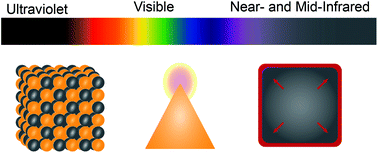Material strategies for function enhancement in plasmonic architectures
Abstract
Plasmonic materials are promising for applications in enhanced sensing, energy, and advanced optical communications. These applications, however, often require chemical and physical functionality that is suited and designed for the specific application. In particular, plasmonic materials need to access the wide spectral range from the ultraviolet to the mid-infrared in addition to having the requisite surface characteristics, temperature dependence, or structural features that are not intrinsic to or easily accessed by the noble metals. Herein, we describe current progress and identify promising strategies for further expanding the capabilities of plasmonic materials both across the electromagnetic spectrum and in functional areas that can enable new technology and opportunities.

- This article is part of the themed collections: Recent Review Articles and Nanoscale 2022 Emerging Investigators


 Please wait while we load your content...
Please wait while we load your content...